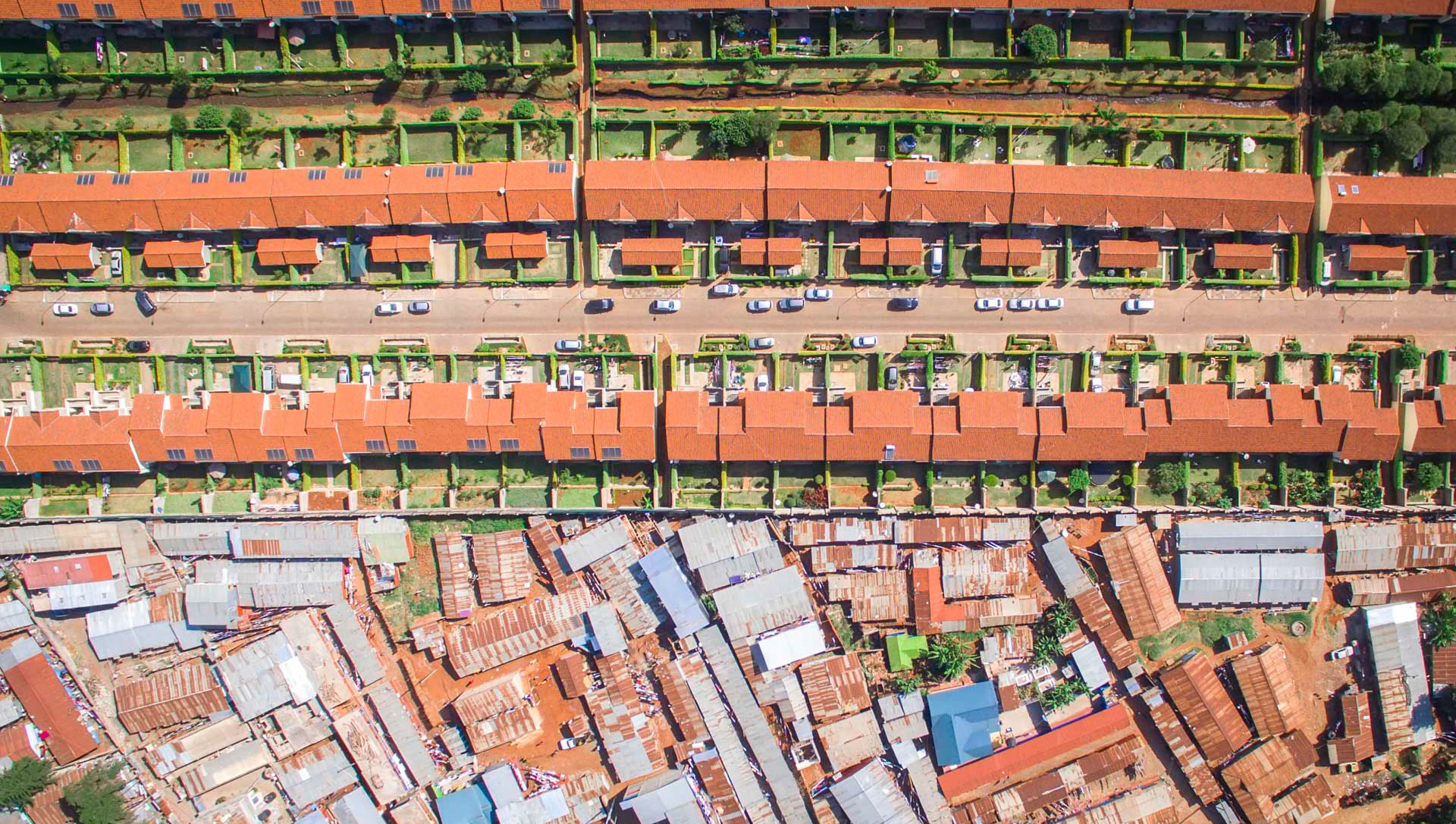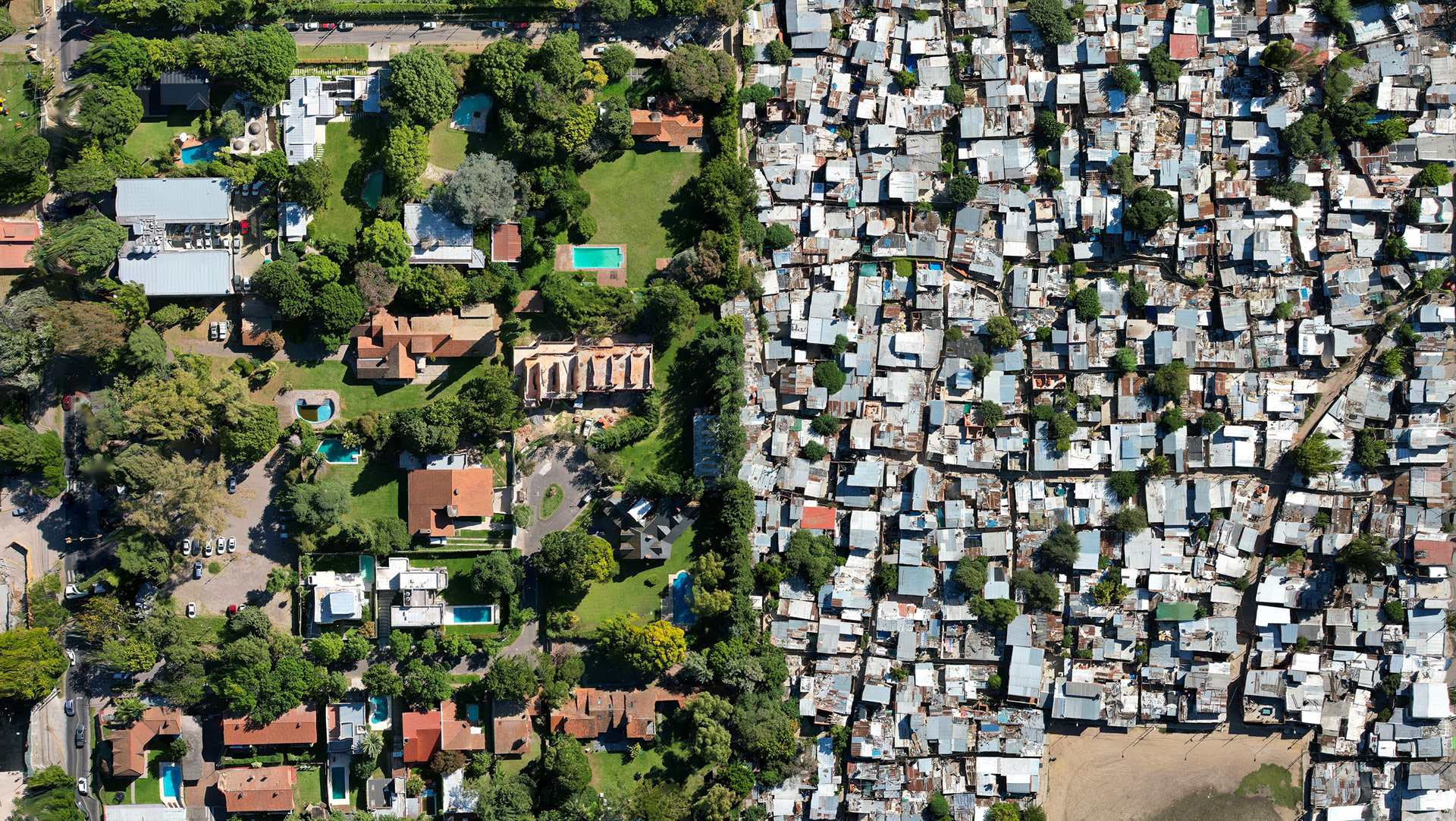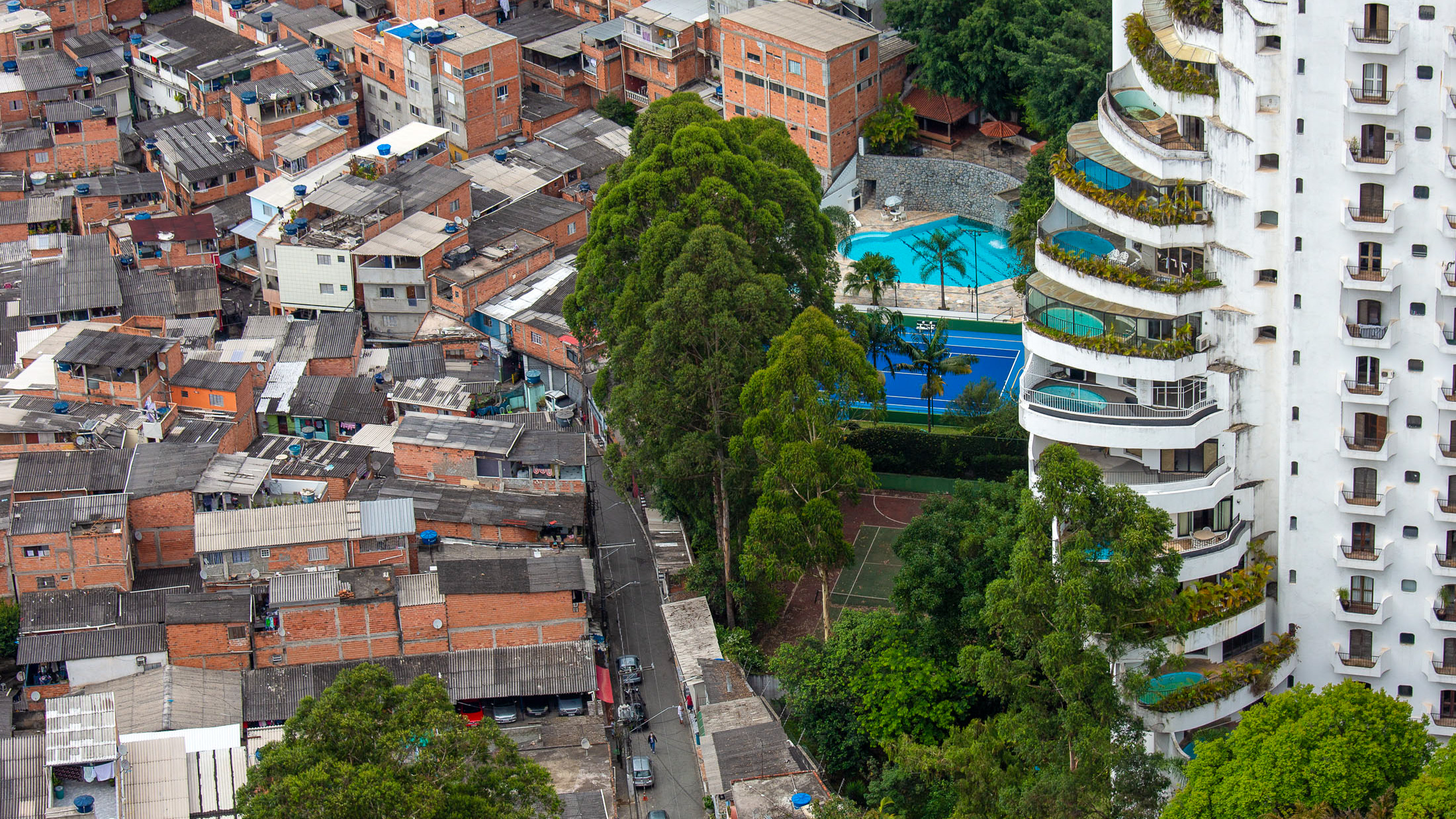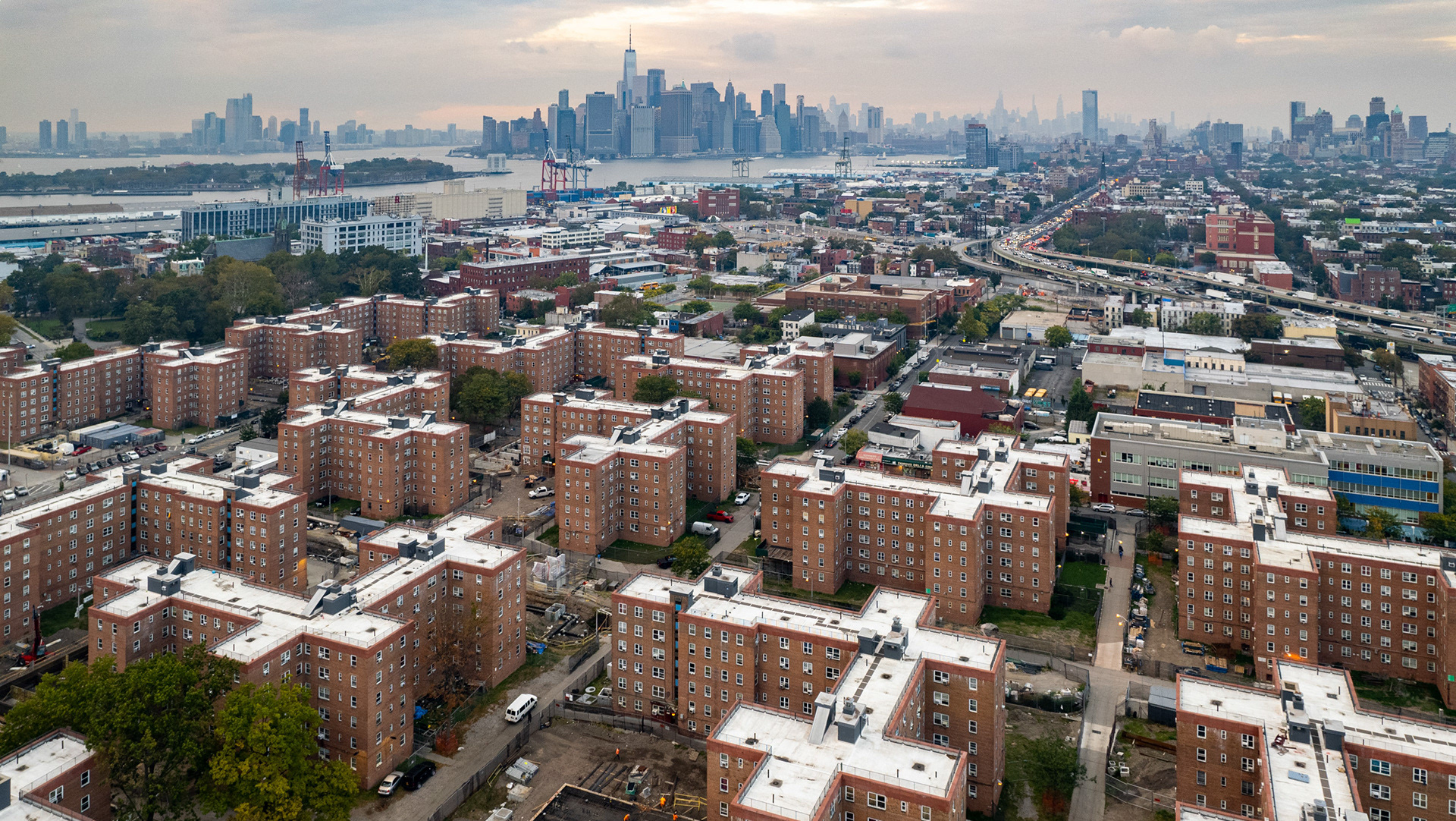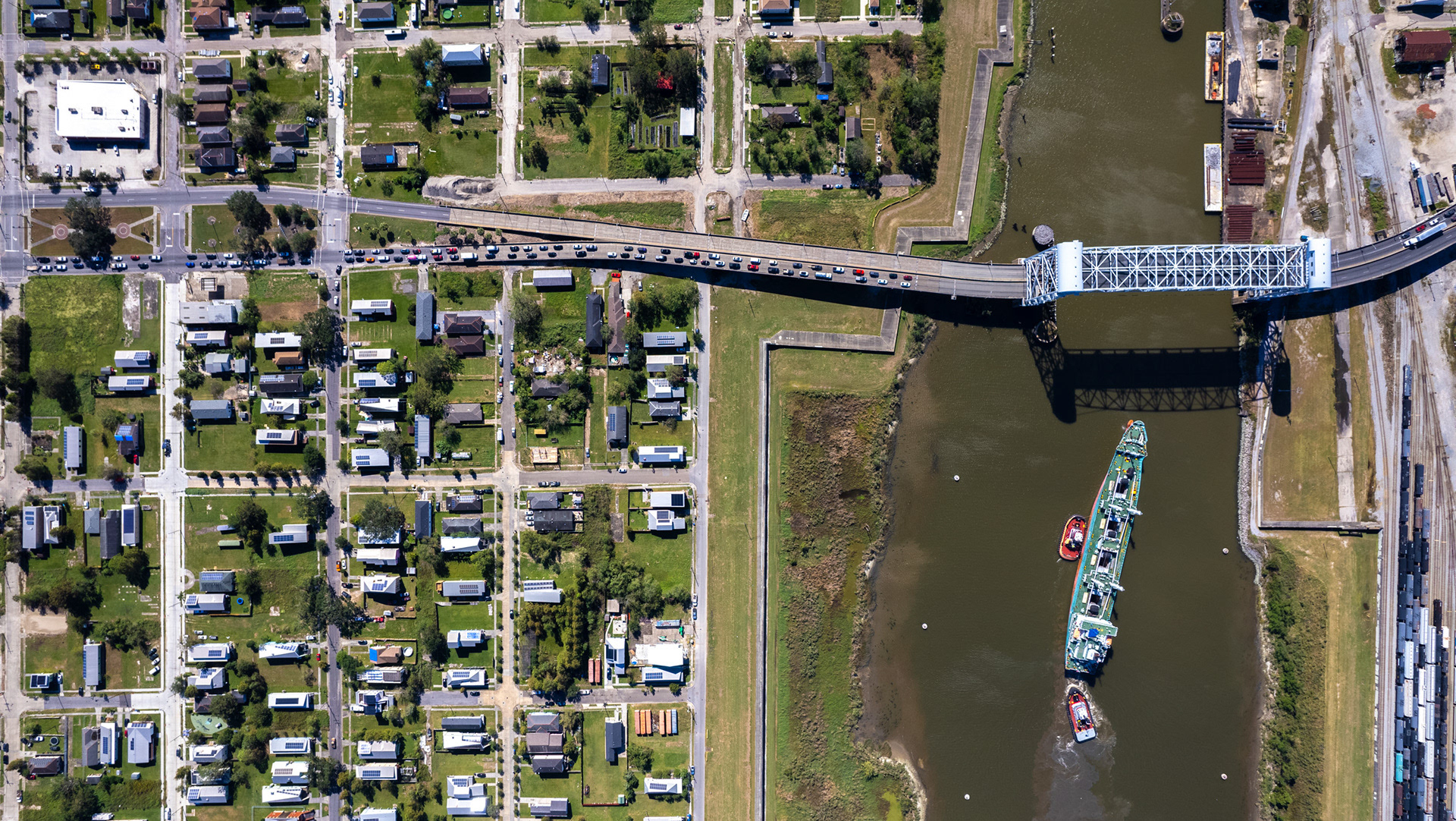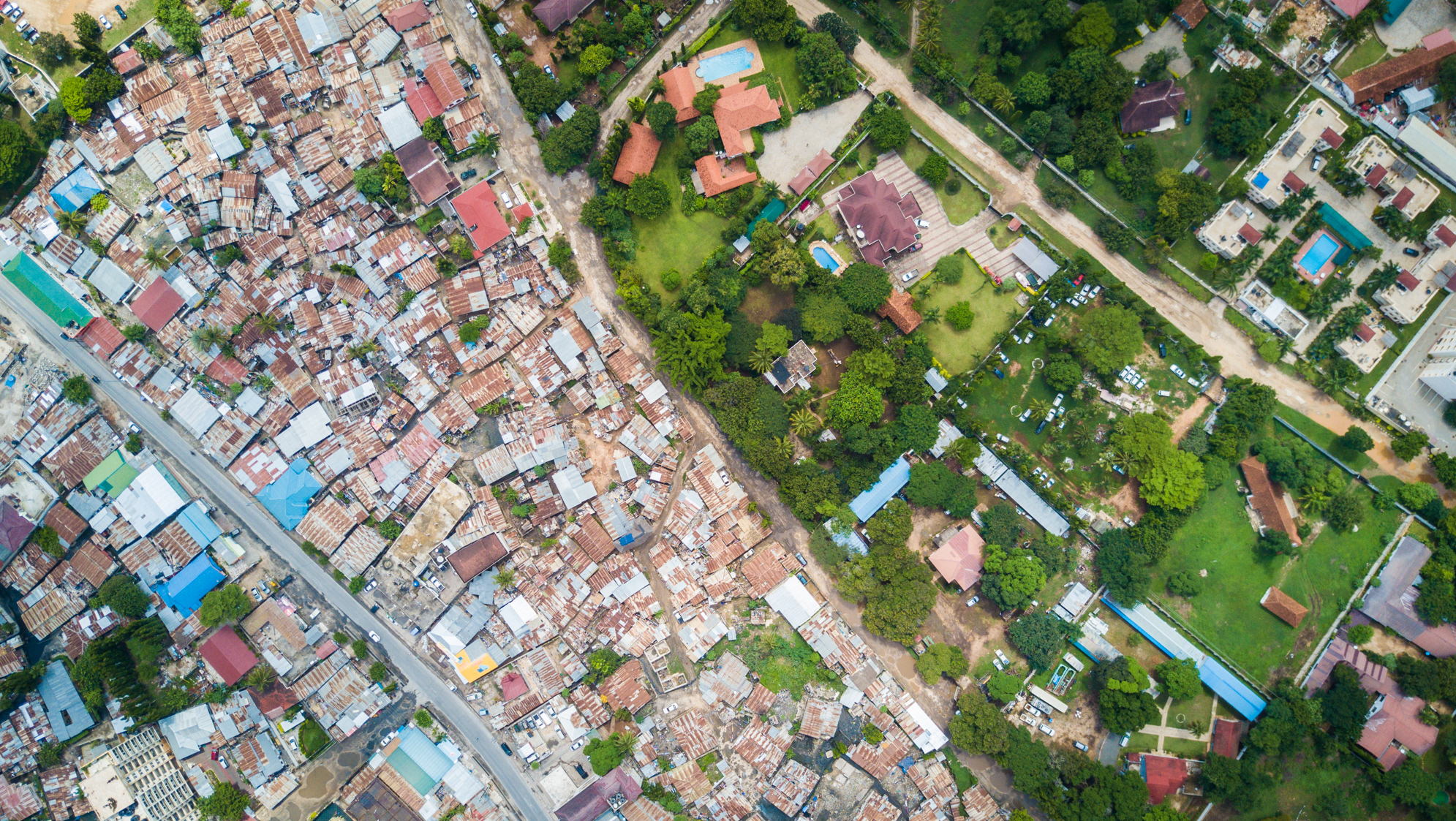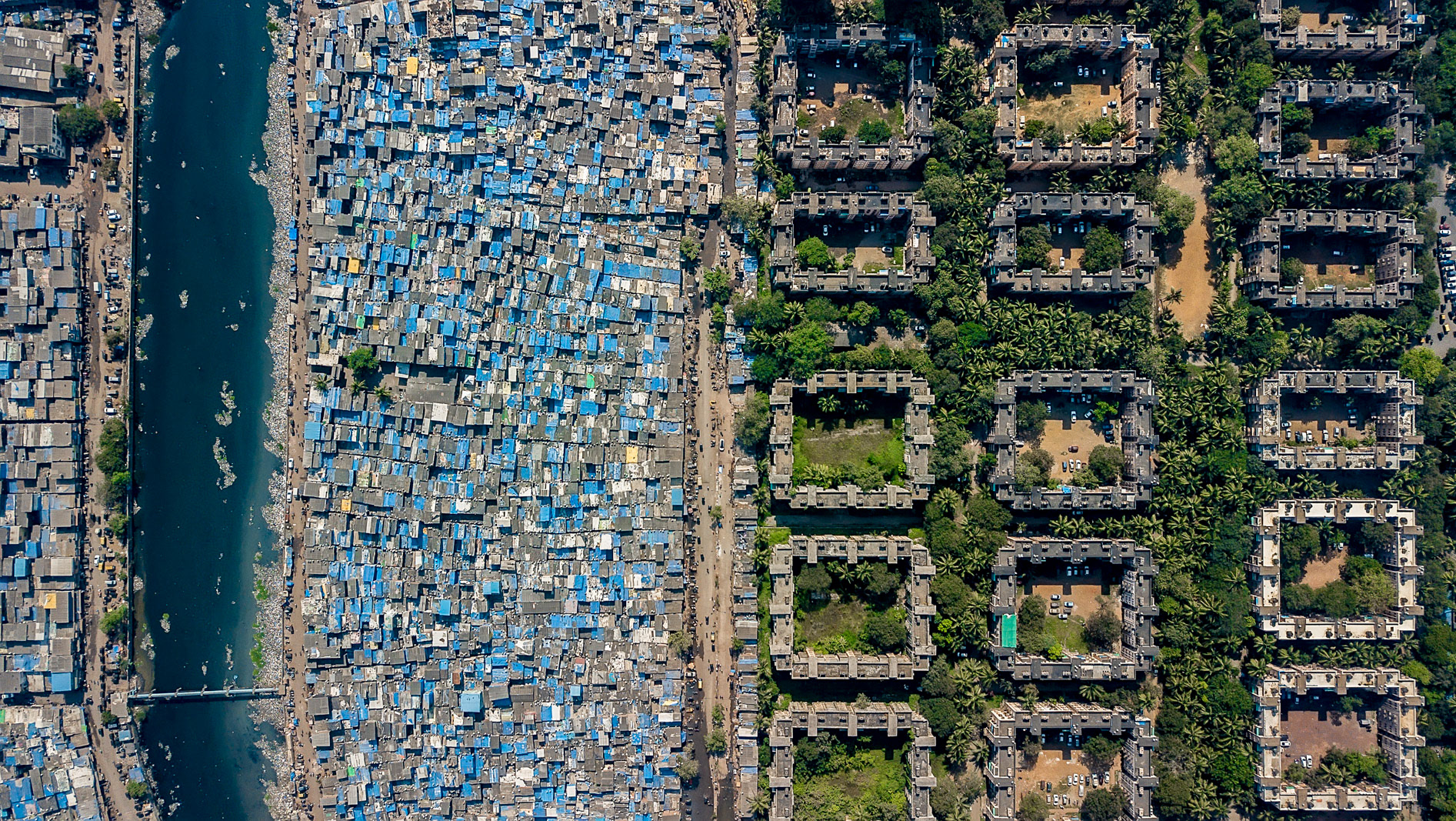The favela of Cantagalo overlooks some of the highest price real estate in Brazil, Copacabana and Ipanema, in Rio de Janeiro's south zone.
The Morro de Providência favela, shown here reflected in the façade of an office tower in downtown Rio.
A balloon carries the portrait of a deceased young man high above the favela of Rocinha (the writing reads in part, "...estiver descanse em paz", or, "may you rest in peace"). Balloon elegies are common here, a public symbol of visibility, public mourning, and resistance. While I don't know the circumstances of his death, his youth means it was likely untimely, potentially a victim of the very high levels of gang violence and police killings within Rio's favelas.
Due to the prevailing winds, balloons are usually carried over the much richer community of São Conrado (visible at the bottom of the picture), occasionally sparking fires. On this night, the balloon floated peacefully over the ocean under a full moon; gently landing in the ocean and extinguishing itself. I was privileged to capture the entire flight on video.
Rio has one of the most beautiful, and complicated, landscapes of any major city in the world. When Portuguese explorers landed here on January 1, 1502, they mistook Guanabara Bay (pictured here) for a river mouth, naming the region "River of January" (Rio de Janeiro).
Today, almost all the flat land (and much of the steep hills) are covered in human settlements - a population of well over 10 million people has developed here amongst this lush forest paradise. In the foreground, the favela of Santa Marta occupies prime real estate overlooking Botafogo, Sugarloaf Mountain, and Guanabara Bay. It was one of the first favelas to be “pacified” by police — a program that brought uniforms but little peace, as the World Cup has moved on and drug gangs are now back in charge. Tourists still come to see the Michael Jackson mural, but few really understand what it means to live here, and almost none stay the night. The alleyways are narrow and improvised (there are no roads), and since 2008 a single tram travels up and down the side of the steep mountainside for transportation.
In the distance, an airplane takes on one of the world's greatest approach paths, carving an almost 180 degree descending turn over Santa Marta, below Sugarloaf, to land at Santos Dumont airport in Rio's center.
The favela of Rocinha is the largest in Rio, and also Brazil. Some 100,000 to 200,000 people live here in concrete houses, sweltering in temperatures that occasionally can feel like 62.3 degrees (144 degrees F). As the favela has grown, it has burst over the mountain and now directly abuts the very rich neighborhood of Gávea.
Copacabana Beach at sunset.
Sheila Maria Gonçalves de Souza in an abandoned building in Santa Marta favela, with Sugarloaf in the background. The police pacification units (UPP) were supposed to provide stability and safety for residents in favelas. But after the Olympics and then World Cup were over, the police seemed to lose interest. Now, drug gangs are back in charge here, but residents don't seem to see any difference between the two groups.
Os Dois Irmãos (The Two Brothers) stand tall above the favela of Vidigal. The beach, however, has the Sheraton Hotel, a swanky resort emblematic of the blended economies of the littoral region of Brazil.
Apartment buildings constructed for the 2016 Olympics sit colorfully alongside the Lagoa da Tijuca, opposite a sprawling favela.
Accusations of corruption and nepotism have dogged Rio developers for years, and the 2014 World Cup and 2016 Olympics were at the top of the list for land grabs and power plays. Multiple prominent politicians have been jailed or accused of corruption in the past few years, including the Mayor, in December 2020.
The favela of Cantagalo is built organically, in a pyramid atop a small hill next to Ipanema.
Santa Marta, Rio de Janeiro. One of the more "famous" favelas, Santa Marta even hosted a music video for Michael Jackson (They Don't Really Care About Us, 1996). Now, the unfinished housing projects, the ailing tramway, and the feeble drainage system are examples in which infrastructure collapses without state assistance. The local neighborhood association, the office within the favela which liaises with the city government, is seen as corrupt and inefficient. The police, widely loathed and mistrusted, rarely enter the favela and then only to “shoot to kill”. It's impossible to enter with a camera (or drone) without the approval of the drug gangs. The resulting vacuum has left the community to fend for itself, but also created a vibrant, fiercely proud, and cohesive culture of creativity.
A man carries a washing machine down the steps in Santa Marta favela, as there are no roads for even a motorcycle to pass in the upper levels of the community.
Nighttime falls on Cantagalo.
The Jurujuba Yacht Club in Niteroi offers accommodation and berthing slips for sailors in its strategic location in Guanabara Bay. Next to it, across a narrow fence, sits a traditional fishing colony.
The favela of Babilônia appears between two luxury hotels just off the famous Leme beach, on the north end of Copacabana.
A man carries cans to recycle on Copacabana's promenade. The economies of the poorest and richest intermingle here, as the beach is the ultimate leveling field, open to all.
Leme is the portion of Copacabana Beach furthest to the north, essentially a dead end of luxury hotels, apartment blocks, and the Babilônia favela.
The Favela da Maré, one of Rio's most dangerous, sits to the north of the city center on the way to the airport. Little visited by tourists, it is wracked by gang violence. This corner is the boundary between two rival gangs, as the bullet-scarred walls can attest.
The varying forms of the city: Favela vs. Planned development in Ipanema.
Arpoador, the border of Ipanema and Copacabana, at sunset.
The famous viaduct in Rio's city center is a symbol of the city's colonial past. More modern symbols, like the Cathedral of São Sebastião, sit just behind it.
Accused of being at turns a safety risk, an impediment to development, and an environmental hazard, residents of Vila Autódromo, near Barra de Tijuca in Rio's west zone, have been threatened with eviction and “upgrading” measures for many years. There are many favelas in the west zone (the film "City of God" was shot nearby) but the decision to host the 2016 Olympic Games, and the selection of the location alongside the Lagoa de Jacarepaguá (immediately adjacent to Vila Autódromo) finally turned those threats into reality.
Developers wanted to turn the entire lakeside into a mix of Olympic facilities, roads and other improvements, and Vila Autódromo did not factor into those plans. Many saw a clear anti-poverty agenda in the actions of the state and private developers, and accusations of hasty development decisions, corruption, and anti-poor motives soon surfaced. Owing to previous successful actions of community organizing, residents of Vila Autódromo came together to protest the decision to resettle them, a protest which gained strength and notoriety due to a series of confrontations and the energetic presence of one resident in particular, Maria da Penha. “They smashed up my face, demolished my home and called me crazy. But I knew the value of my land. I like living here and you cannot put a price tag on happiness. If I left this land, I would not find anywhere like it, because here I have my history, my roots”, da Penha writes in a moving essay.
Finally, after many negotiations, demolitions, protest action, and community organization (and international media attention) the City conceded that “anyone who wanted to stay could stay” in Vila Autodromo. But most people, by that point, had already left. The ones who did stay attempted to force the developers to adhere to a community plan for redevelopment, something that at one point was agreed to but never followed through with.
The current iteration is an orphan, a strange polyp hanging off of the side of the Olympic Park. Gone is the access to the water, the community spirit, and most of the former residents.
Guanabara Bay, looking towards Botafogo, with the Christ the Redeemer statue on top of Corcovado mountain in the background.
The word quilombo means “an autonomous community of fugitive slaves” in the Brazilian context, and is an important part of Afro-Brazilian history.
The first quilombos emerged in the context of expansion of the colonial economic activity of sugar cane in Northeast Brazil, with resistance as a basic characteristic. Most can be found today in Bahia and Maranhão states, although the most famous was called Quilombo dos Palmares, and was located in present-day Alagoas. It was here that capoeira was said to have been first arisen, and the iconography of this powerful and large “Free-slave community” became a symbol of African resistance.
In Rio there are very few quilombos, however this one (Quilombo da Gamboa) in the center of the city is special, in that it is only steps from the wharf where hundreds of thousands of slaves were brought from Africa to be sold. Roberto (pictured with the Black Lives Matter shirt) told me that he found skeletal remains of slaves on the quilombo property, with shackles still attached to their bones.
Quilombo Sacopã and is located right in the middle of one of the wealthiest neighborhoods in Rio (Lagoa). Surrounded by mansions and luxury high-rise buildings, several families continue to live here and resist efforts to buy them out (there is a great interview with José Luiz Pinto, who can trace his lineage back 6 generations, here.
Itanhangá Golf Estate, next to a favela, in Rio's South Zone near Barra da Tijuca.
A mountain separates Cantagalo and Ipanema from Lagoa.
Natural barriers abound in Rio, splitting apartment buildings with favelas better than any man made construction.
The sprawling favela of Rochina, looking towards the mountain of Pedro da Gávea.
The reflected image of the Morro de Providência favela.

